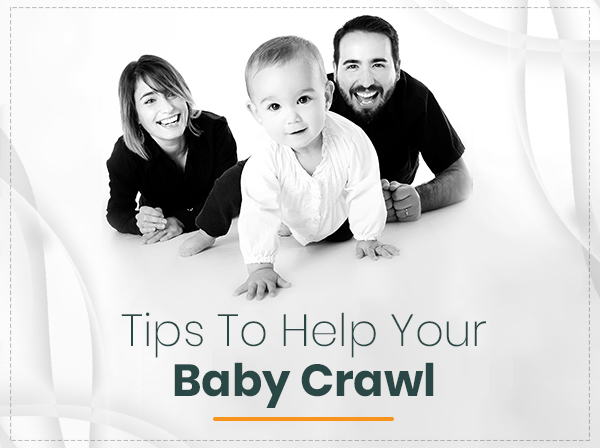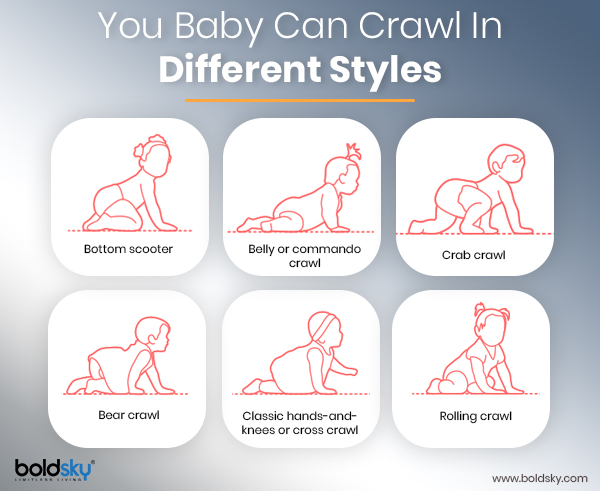Just In
- 2 hrs ago

- 11 hrs ago

- 13 hrs ago

- 14 hrs ago

Don't Miss
- Sports
 Who Won Yesterday's IPL Match 40? DC vs GT, IPL 2024 on April 24: Delhi Capitals Clinch High-Scoring Thriller At Kotla
Who Won Yesterday's IPL Match 40? DC vs GT, IPL 2024 on April 24: Delhi Capitals Clinch High-Scoring Thriller At Kotla - Education
 JEE Main 2024 Result Out on jeemain.nta.ac.in, 23 Students Secured 1st Rank With 100 Percentile
JEE Main 2024 Result Out on jeemain.nta.ac.in, 23 Students Secured 1st Rank With 100 Percentile - News
 Mangalsutra Row: Did Indira Gandhi Donate Gold During The 1962 War? The Facts Behind Priyanka's Claim
Mangalsutra Row: Did Indira Gandhi Donate Gold During The 1962 War? The Facts Behind Priyanka's Claim - Movies
 Kota Factory 3 OTT Release Date, Platform: When Will Jitendra Kumar's Web Series Premiere On Netflix?
Kota Factory 3 OTT Release Date, Platform: When Will Jitendra Kumar's Web Series Premiere On Netflix? - Travel
 Escape to Kalimpong, Gangtok, and Darjeeling with IRCTC's Tour Package; Check Itinerary
Escape to Kalimpong, Gangtok, and Darjeeling with IRCTC's Tour Package; Check Itinerary - Finance
 DCB Bank Q4 Results: PAT Grew 9% To Rs 156 Cr, NII Jumps 4.5%; Dividend Declared
DCB Bank Q4 Results: PAT Grew 9% To Rs 156 Cr, NII Jumps 4.5%; Dividend Declared - Technology
 OPPO Find X7 Ultra Camera Deep-Dive: Pushing the Boundaries of Photography on a Smartphone
OPPO Find X7 Ultra Camera Deep-Dive: Pushing the Boundaries of Photography on a Smartphone - Automobiles
 Aston Martin Vantage Launched In India At Rs 3.99 Crore
Aston Martin Vantage Launched In India At Rs 3.99 Crore
6 Ways In Which You Can Encourage Your Baby To Crawl
For any new parent, their infants are indeed a fascination and commitment. Each milestone such as the first laugh, the first time sitting up and first time crawling are all exciting moments in the life of the parents. Out of these, the major step is indeed the first time crawling. When your baby is on her back and barely moving, it may look like they will take some solid time to become mobile.
When Do Babies Start To Crawl?
Between 4 and 6 months, babies will typically begin crawling, with many starting to walk around their first birthday. The process of learning to crawl is pretty complex, at the same time, easy. Because there is no necessity to teach your baby to crawl as it is a natural developmental milestone that happens when your baby is ready [1] .

While some babies may start rolling over early on itself, they may take a long time to begin crawling. Basically, every child is different. Most babies begin to crawl somewhere between six and 10 months of age [2] . As with rolling over, there are several different ways in which your baby might begin to crawl.
Here are the most common ways a baby can crawl.

Health experts point out that new parents must be aware that there is no conclusive evidence which indicates that babies who crawl earlier in life become smarter, stronger, or healthier later in life. So, if your little drop of heaven has not yet begun to crawl - worry not. It is a natural process that takes time [3] .
However, as a baby is a baby, giving them the push to crawl can be effective. That is, there are a few things you can do to encourage your baby to get moving and make sure that your baby's motor skills are on track.
Ways To Help Your Baby Learn To Crawl
Here are some ways which could help you help your baby to encourage crawling [4] [5] .
1. Reduce the amount of time in walkers and bouncers
The first step towards helping your baby crawl all by himself or herself is to reduce the time that is being spent in walkers and bouncers as they limit the child's floor time. It has been reported that babies who don't spend a lot of time on the floor may take longer to develop the strength they need to crawl. Reducing walker time can encourage movement.
2. Get on the floor and crawl with your baby
Babies who see their parents or siblings crawling along with them have been found to learn it quicker. The infant may imitate your movement and attempt to crawl. This also works by keeping their favourite toy or something in a safe distance, where the baby will attempt to crawl toward the object.
3. Give your baby plenty of tummy time
By playing on their bellies, babies develop the muscle strength in their shoulders, arms, back and trunk that helps them learn to crawl, studies assert. Some babies don't enjoy tummy time, especially at first. So, take your time in exercising it on your wee baby.
4. Provide a comfortable space for them to explore
Set up a neat and clean space on the floor and arrange it with toys and things your baby likes and can explore safely. If you have a non-carpeted area in your house, it is the best as space will help make movement smoother for the baby.
5. Let your baby play in front of a mirror
Make use of that curiosity in your baby. Letting them play in front of a mirror (supervised) can help promote crawling because they will want to check out their reflection for sure, which will lead to holding themselves up and reaching out toward the mirror.
6. Lift your baby off the floor
Picking up your baby by the arms or armpits just enough to support their body weight can help in providing a leg workout for your tiny one. Make sure not to lift their feet completely off the ground. By doing so, you can help your baby practise the motion of walking and will help strengthen their legs [6] .
On A Final Note...
While your beginning to crawl is great news, it is critical to put safety first. Begin by babyproofing your house and keeping the floors clean because dust and dirt from the floor can lead to irritated skin or a baby rash [7] . NEVER push your child to learn to crawl because forcing a child to develop a skill he isn't ready for can slow the learning process.
Note: If you notice that your child is using only one side of her body to crawl or if your baby is not making forward progress in using her body to get around - contact a doctor immediately [8] .
- [1] Schwarzer, G., Freitag, C., Buckel, R., & Lofruthe, A. (2013). Crawling is associated with mental rotation ability by 9‐month‐old infants. Infancy, 18(3), 432-441.
- [2] Clearfield, M. W., Osborne, C. N., & Mullen, M. (2008). Learning by looking: Infants’ social looking behavior across the transition from crawling to walking. Journal of Experimental Child Psychology, 100(4), 297-307.
- [3] Herbert, J., Gross, J., & Hayne, H. (2007). Crawling is associated with more flexible memory retrieval by 9‐month‐old infants. Developmental Science, 10(2), 183-189.
- [4] Visser, M. M., & Franzsen, D. (2010). The association of an omitted crawling milestone with pencil grasp and control in five-and six-year-old children. South African Journal of Occupational Therapy, 40(2), 19-23.
- [5] Lagerspetz, K., Nygåkd, M., & Strandvik, C. (1971). The effects of training in crawling on the motor and mental development of infants. Scandinavian Journal of Psychology, 12(1), 192-197.
- [6] Karasik, L. B., Tamis‐LeMonda, C. S., & Adolph, K. E. (2011). Transition from crawling to walking and infants’ actions with objects and people. Child development, 82(4), 1199-1209.
- [7] Karasik, L. B., Tamis‐LeMonda, C. S., & Adolph, K. E. (2014). Crawling and walking infants elicit different verbal responses from mothers. Developmental science, 17(3), 388-395.
- [8] Gibson, E. J., Riccio, G., Schmuckler, M. A., Stoffregen, T. A., Rosenberg, D., & Taormina, J. (1987). Detection of the traversability of surfaces by crawling and walking infants. Journal of Experimental Psychology: Human Perception and Performance, 13(4), 533.
-
 pregnancy parentingWhat Are The 4 Must Have Vitamins For Kids With Diabetes?
pregnancy parentingWhat Are The 4 Must Have Vitamins For Kids With Diabetes? -
 pregnancy parentingStates On High Alert As China Grapples With Respiratory Infections: Symptoms, Do’s And Don’ts
pregnancy parentingStates On High Alert As China Grapples With Respiratory Infections: Symptoms, Do’s And Don’ts -
 healthBust Bloating: 5 Exercises Every Teenage Girl Needs For A Happy Tummy
healthBust Bloating: 5 Exercises Every Teenage Girl Needs For A Happy Tummy -
 pregnancy parentingIncreasing Reports Of STIs In Children: Tips for Parents on Educating Kids about STI Prevention
pregnancy parentingIncreasing Reports Of STIs In Children: Tips for Parents on Educating Kids about STI Prevention -
 pregnancy parentingAre You The Second Favourite Parent To Your Kid? Signs To Watch Out For
pregnancy parentingAre You The Second Favourite Parent To Your Kid? Signs To Watch Out For -
 pregnancy parentingWorld Toilet Day: 5 Ways To Teach Healthy Bathroom Habits In Kids
pregnancy parentingWorld Toilet Day: 5 Ways To Teach Healthy Bathroom Habits In Kids -
 healthAre You Really “Super Smart,” But Just Don’t Know It Yet? 4 Signs You Have A High IQ
healthAre You Really “Super Smart,” But Just Don’t Know It Yet? 4 Signs You Have A High IQ -
 pregnancy parentingTwo Wombs, Four Hearts: US Mom's Extraordinary Double Uterus Pregnancy
pregnancy parentingTwo Wombs, Four Hearts: US Mom's Extraordinary Double Uterus Pregnancy -
 pregnancy parentingChildren's Day 2023: A Glimpse Into Education Abroad: Perspectives From Indian Parents In Canada, Australia..
pregnancy parentingChildren's Day 2023: A Glimpse Into Education Abroad: Perspectives From Indian Parents In Canada, Australia.. -
 pregnancy parentingWhat Are The Mandatory Vaccines For Children In India?
pregnancy parentingWhat Are The Mandatory Vaccines For Children In India? -
 pregnancy parentingWorld Pneumonia Day: Risk Factors Of Pneumonia In Children
pregnancy parentingWorld Pneumonia Day: Risk Factors Of Pneumonia In Children -
 pregnancy parentingChildren’s Day: 5 Books You Can Introduce To Kids Above 10 Yrs
pregnancy parentingChildren’s Day: 5 Books You Can Introduce To Kids Above 10 Yrs


 Click it and Unblock the Notifications
Click it and Unblock the Notifications



